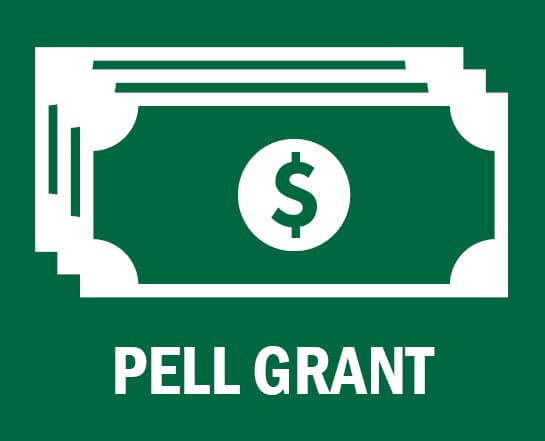Every student has the right to education. But sometimes, it’s not in everyone’s financial reach. Some students pay for student loans such as degrees or certifications to earn higher education. However, these loans become a looming shadow that will haunt them in the future as back-breaking debts, especially for low to middle-income earners.
However, this doesn’t specifically mean higher education is for the elite. The government has developed some programs to support students from low to middle-income families. And one of those ways is the Pell Grant. It’s a one-way ticket to debt-free money that the government offers to those students who need it. Want to learn more about it? Don’t worry, we’re your guide.
The following blog will focus on the nitty-gritty details of the Pell Grant. We’ll explain how to be eligible for Pell Grant. So, as you start thinking about college, be sure to give this blog a read first.
What is Pell Grant?

Although some of you might be aware of Pell Grant, let’s give a quick overview for those who are not. In simple terms, the Pell Grant is a form of financial aid offered by the US Department of Education to support low-income students who can’t afford college costs. It doesn’t only include the tuition fees but also the board, room, and other educational expenses.
To apply for a Pell Grant, the students must complete the Free Application for Federal Student (FAFSA®), which we’ll discuss later. This is among the largest grant programs the US Department of Education offers. And what makes it so special is that being a grant, it doesn’t need to be paid back. It was devised in 1972 and has awarded low-income students financial aid for their educational endeavors. The Pell Grant was named after Sen Claiborne Pell of Rhode Island.
How to Eligible for a Pell Grant?

Although the Pell Grant can help reduce the financial burden on families at the time of higher education. However, the program requires specific requirements that the student must ensure for eligibility. Let’s go through each so you can clearly see your Pell Grant eligibility for 2023-24.
Criteria Set by New FAFSA®:
As the Pell Grant is a federal program, you must fill out the FAFSA® application form each year you plan to apply for a degree program. If you’re unaware of what FAFSA® is, it’s a form you need to fill out first to apply for any federal student aid, including grant loans and work-study funds. Furthermore, it also helps institutions determine your eligibility for state and school aid. In the recent year, FAFSA® has seen major developments that have changed the eligibility of Pell Grant in 2023-24. If you need any assistance, be sure to hire a professional grant writer. Here are five factors that determine whether you’re eligible or not.
1. Student Dependency Status:
Before applying, you must determine whether you are a dependent or an independent student. If the student meets any of the criteria below, they are defined as independent students for the 2023-24.
- Born before Jan 1, 2000
- A graduate or professional student
- Married
- A Veteran
- Someone having legal dependence other than their spouse
- Someone without a home or those who are at risk
- A court ward
- An Emancipated minor
- An orphan
- An armed force member
You’ll be termed as a dependent student if you don’t match any criteria. The student’s status is crucial to determine first as it ensures whether you’ll report your information (independent student) or your and your parent’s information (dependent student) in the FAFSA® form.
2. Residence Status:
The Pell Grant isn’t strictly for US citizens only, but anyone with a permanent address can apply for it. The state residence ship determines which poverty guidelines the student needs to be under for maximum or minimum Grant percentage. The 48 US States follow the primary poverty guidelines, while Alaska and Hawaii have separate poverty guidelines.
3. Adjusted Gross Income (AGI) for Student’s/ Parents:
The AGI is another crucial factor that students must consider to be eligible for maximum or minimum Pell Grant percentage. According to the Internal Revenue Service, the AGI refers to gross income minus any adjustments used for tax returns.
Gross income includes your wages, dividends, business income, retirement distribution, capital gains, etc., while adjustments include student loan interest, educator expenses, alimony payments, etc. Dependent students must provide their parent’s AGI, while independent ones need to present their own.
4. Single Parent Status:
In addition to dependency, the number of parents can also impact the grant calculation. If the dependent student has a single parent, they must use single-parent calculations. In contrast, if the independent parent is the single parent, they’ll need to use the separate single-parent calculation to determine whether they are eligible for maximum or minimum Pell Grant.
5. Family Size:
Family size is another factor that determines the student’s eligibility. More family members increase the poverty guideline. If the AGI falls below the poverty guidelines, the student is eligible for the maximum or minimum Pell Grant percentage.
Other Criteria for Eligibility:
Apart from the FAFSA®, here are a few other guidelines the student needs to ensure Pell Grant eligibility:
1. Citizenship:
The student must ensure their citizenship. They must be either US citizens or have permanent residence in the state.
2. Valid SSN:
The student must also possess a valid social security number the Social Security Administration offers.
3. Accredited University:
Students can only be allowed the Pell Grant if they are studying in an institution that allows it.
4. Maintain SAP:
The student must also ensure satisfactory academic progress throughout the degree or certificate. Failure to comply can cause loss of eligibility for financial student aid.
Summing it Up
As we approach the end, let’s go through what we learned. The Pell Grant is a program through which the federal government supports low-income students with higher study expenses. You may need to check your financial student aid eligibility before applying. Observe each criterion in detail to determine whether you’re eligible. Now that you know how to be eligible for Pell Grant, be quick to apply for it.
FAQs
What is Pell Grant and Why Do I Need it?
A Pell Grant is a financial student aid through which a student can pay their higher education expenses. As it’s a grant, they don’t need to be paid back, making it a significant resource for low-income students.
I Am a Single Parent. Can my Child Apply for a Pell Grant?
Yes, your child can apply for the Pell Grant. However, the eligibility may depend on the student’s status, residence, AGI, and family members. If the child falls in the eligibility criteria, they have a higher chance of receiving the Pell Grant.
What is the FAFSA® form, and Why Should I Fill It Out?
The FAFSA® is a form you must fill out to apply for grants, work-study programs, or loans.
Should I Apply for a Pell Grant if I Have a High Income?
The Pell Grant is only for families below a certain poverty guideline. If your AGI is higher than the poverty guideline for the year, you might not be eligible for Pell Grant. However, that doesn’t mean you’re free from financial aid. With research, you might be able to find some other form of aid to help you with educational expenses.

